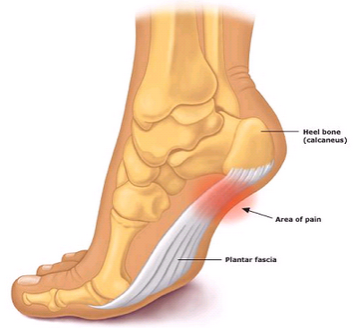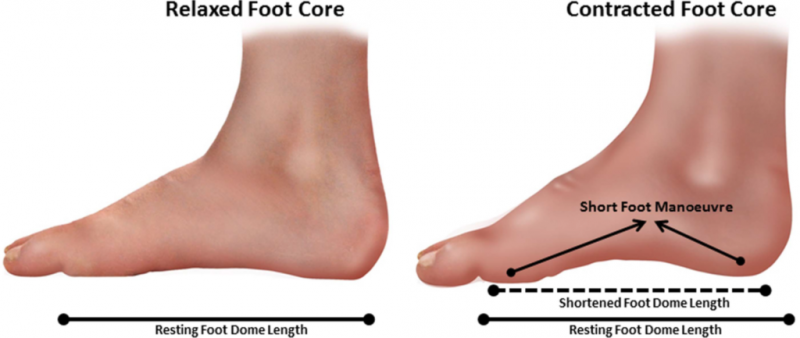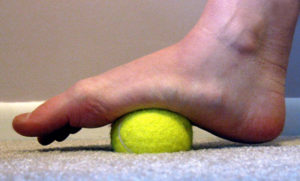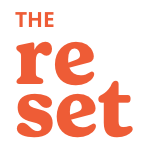
Plantar fasciitis is one of the most dreaded pregnancy and postpartum maladies. It’s painful and persistent, but it is treatable.
This week, on #WholeMama Wednesday, Dr. Blessyl Buan explains why plantar fasciitis happens to mamas so often and what you can do to prevent it or ease your pain if you’ve already developed the
“itis.”

You know it if you’ve got it. You likely had nagging symptoms… feelings of tightness, maybe some aching. But life is busy with a capital “B.” You put off seeing your doctor.
Now it hurts just to put your feet on the floor every morning. You can’t wear your favourite shoes. You wonder if you’ll ever be able to run that 5K next spring.
But how did this happen?
“This is the posture of a tired skeleton.”
Motherhood means lots of cuddling, nursing, baby wearing, and holding, which are so repetitious they can cause changes in our posture. It means hormones that stretch joints and can cause more tension in tissues. It means sleepless nights and muscular fatigue. It means less time for self-care.
In essence: the perfect storm for poorly balanced muscles and symptoms like plantar fasciitis.
Do you have plantar fasciitis? Please comment below or on our YouTube channel and keep reading below the video for more self-care tips from Dr. Blessyl.
PLANTAR FASCIITIS PAIN, CARE & PREVENTION FOR MAMAS
TIPS TO KEEP YOUR FEET HEALTHY & PAIN-FREE
Strengthen
Strengthening the intrinisic muscles of the foot is important to maintain the built-in arch support in our feet. We don’t always wear shoes so it’s important to incorporate these exercises into your routine.
Doming exercises are great for “waking up” and strengthening the intrinsic muscles of the foot. This can be executed by sitting with your knees bent and feet flat on the floor. Feeling as if a string is attached to the middle toe metatarsal knuckle, lifting it away from the floor and feeling it slide it closer to your heel. Hold this position for 5 seconds, and then release. The toes should stay lengthened throughout.

Pilates exercise prescription is also helpful to coordinate core stability to support the alignment of the hip, knee, ankle and feet.
Wear properly fitting shoes
There are many styles and brands of shoes that are designed for a specific foot as well as different tasks, like running, hiking, dancing, etc. A properly fitting shoe will provide sufficient arch support and width to support the natural alignment of the foot. More supportive choices include the Birkenstock sandal and a supportive athletic shoe with arch support.
Consider fitting yourself for a new pair of athletic shoes after baby is born, since your foot has likely changed significantly, as Dr. Blessyl explains in the above video.
Self-massage

To keep the muscles in the arch of the foot happy, self-release with a small massage ball is helpful to soften the tightand sore spots on the bottom of the foot. It also helps to mobilize the bones of the foot that drop down into the arch and contribute to the painful symptoms.
Try keeping a small ball under your desk at work or home for daily use. More on self-massage in the video!
Custom Foot Orthotics
Orthotics are custom moulded from each foot to support your natural arch. When pain levels are intense and exercises are not enough, a passive support can help to keep pain and symptoms from developing and recurring.
AND IF HOME TREATMENT DOESN’T CUT IT & YOU ARE IN
PAIN…
When home methods aren’t sufficient, Chiropractic treatment is helpful to realign the joints of the feet, ankle and spine. Fascial release and soft tissue therapy help to correct the sore and tight areas that developed as a compensation for poor posture.
Acupuncture is helpful to correct alignment, reduce inflammation and pain. Finally, Kinesiotape (supportive taping of the tissues) can help release the tight fascia of the arches of the feet and of the calf muscles, whose fascia is continuous with the plantar fascia.
